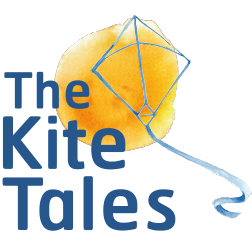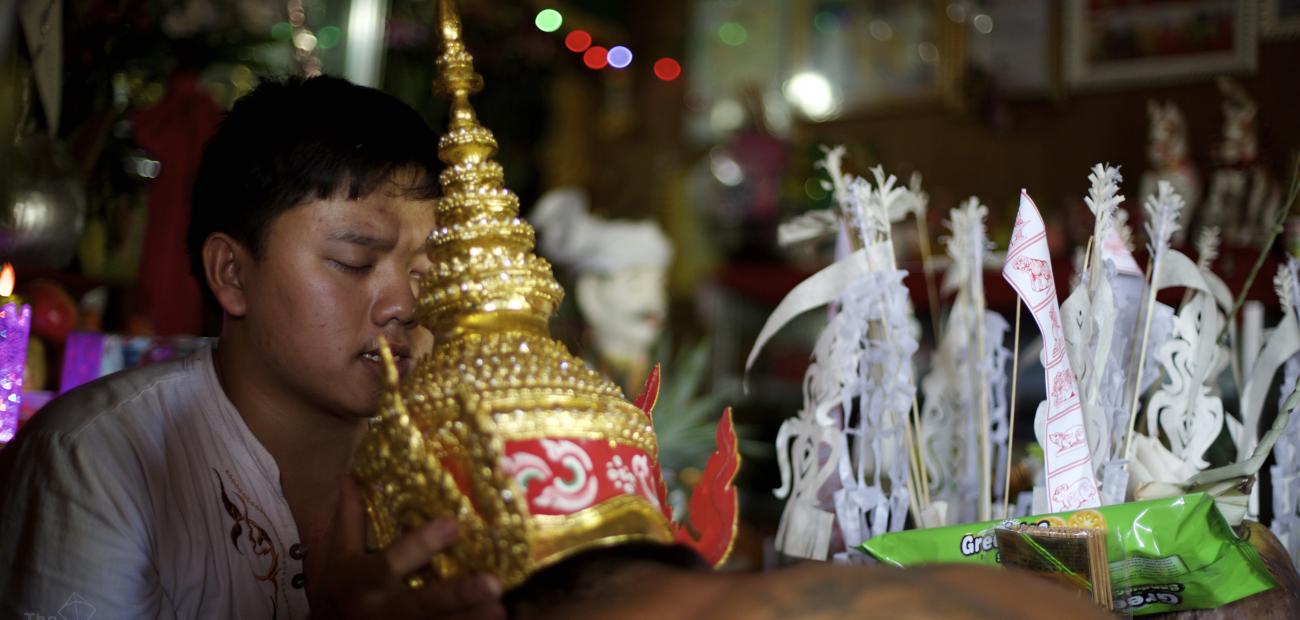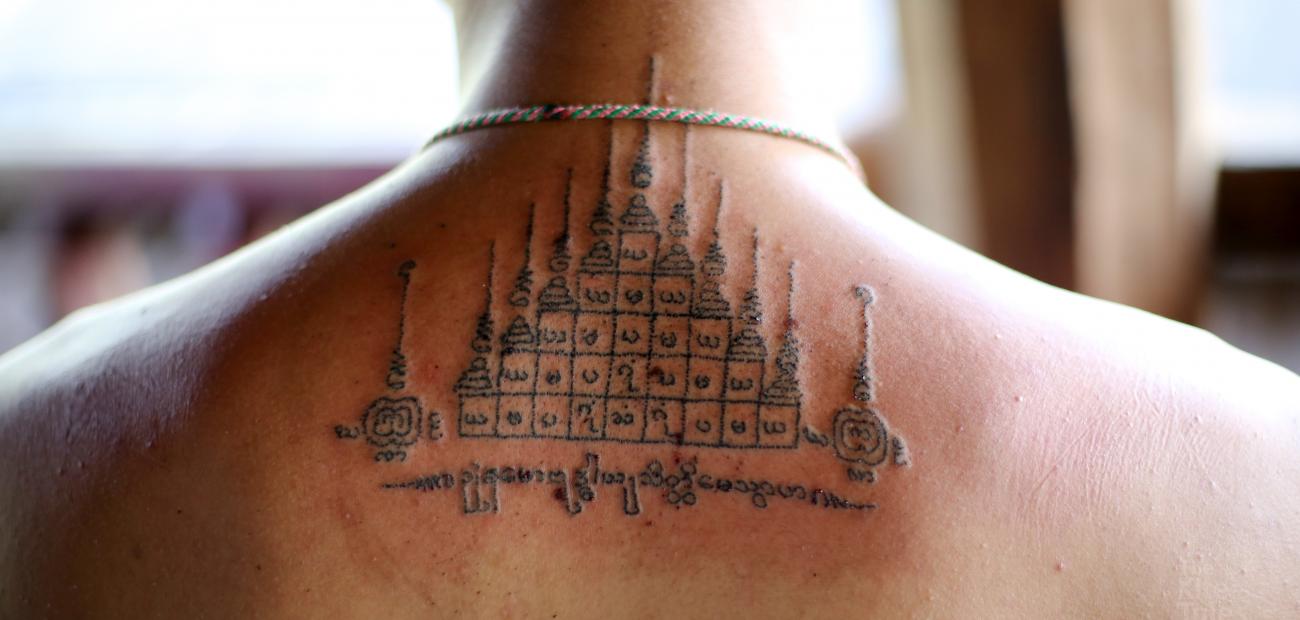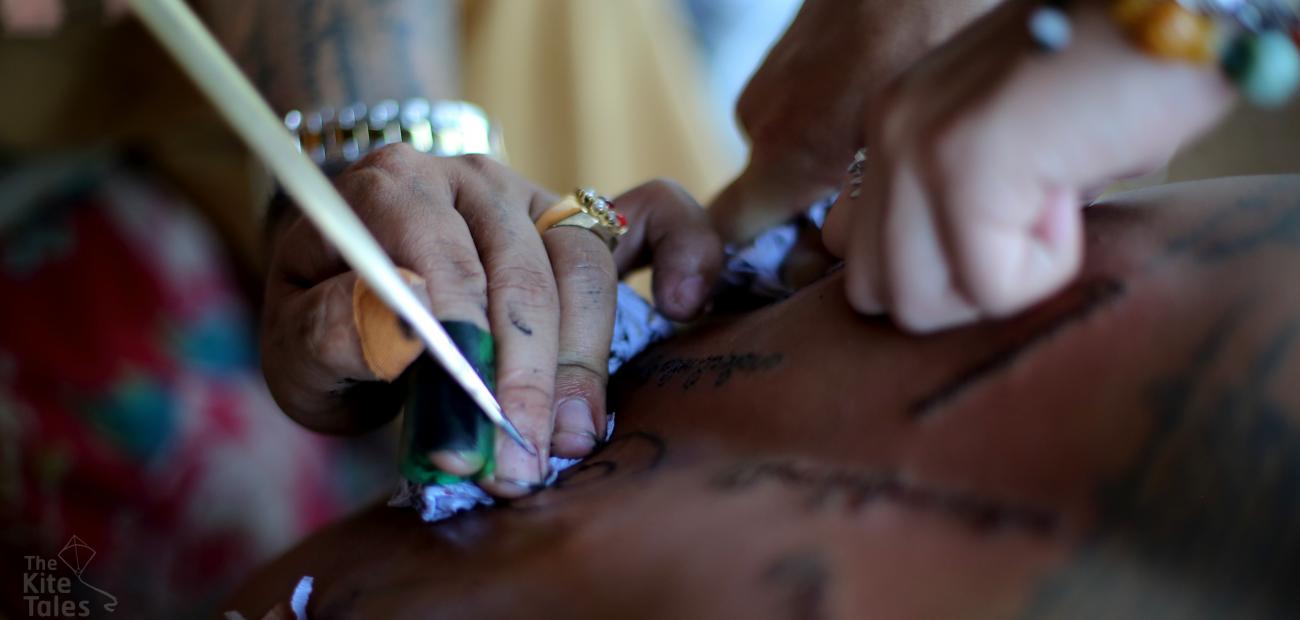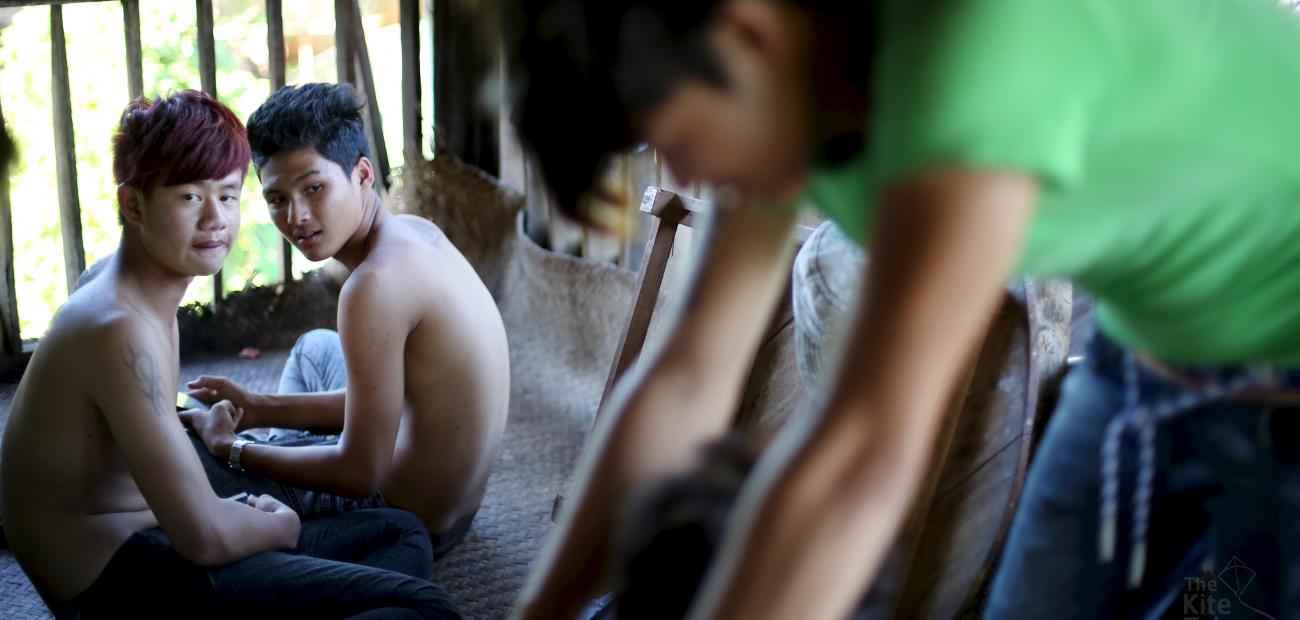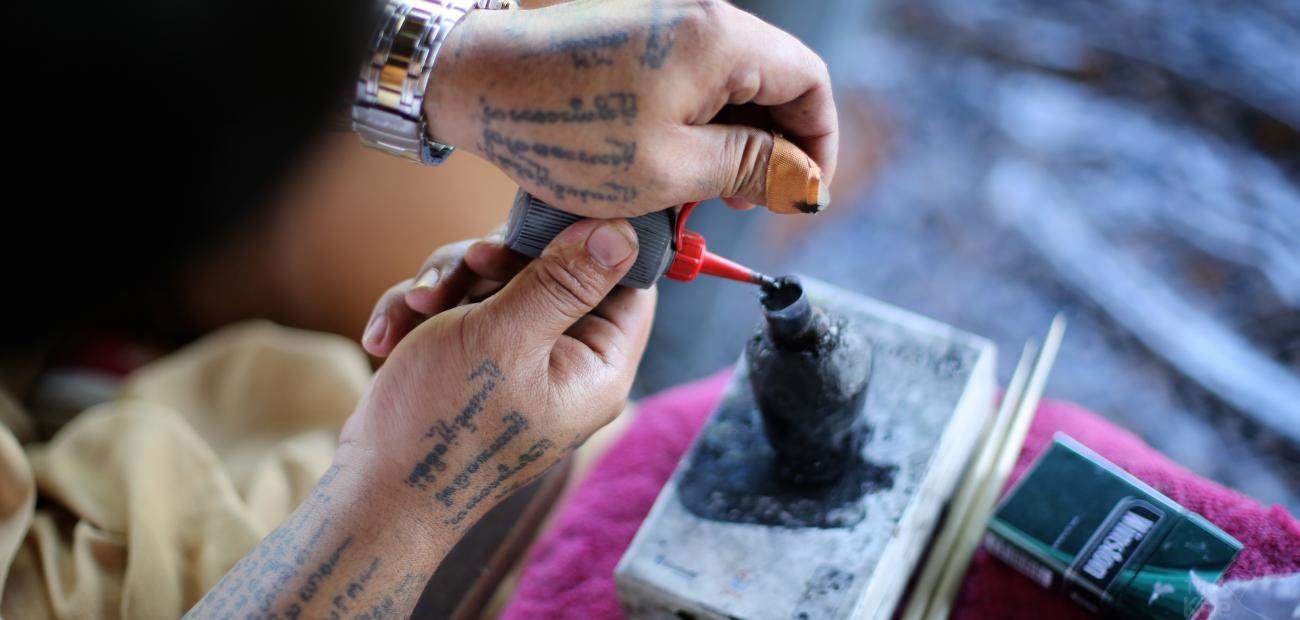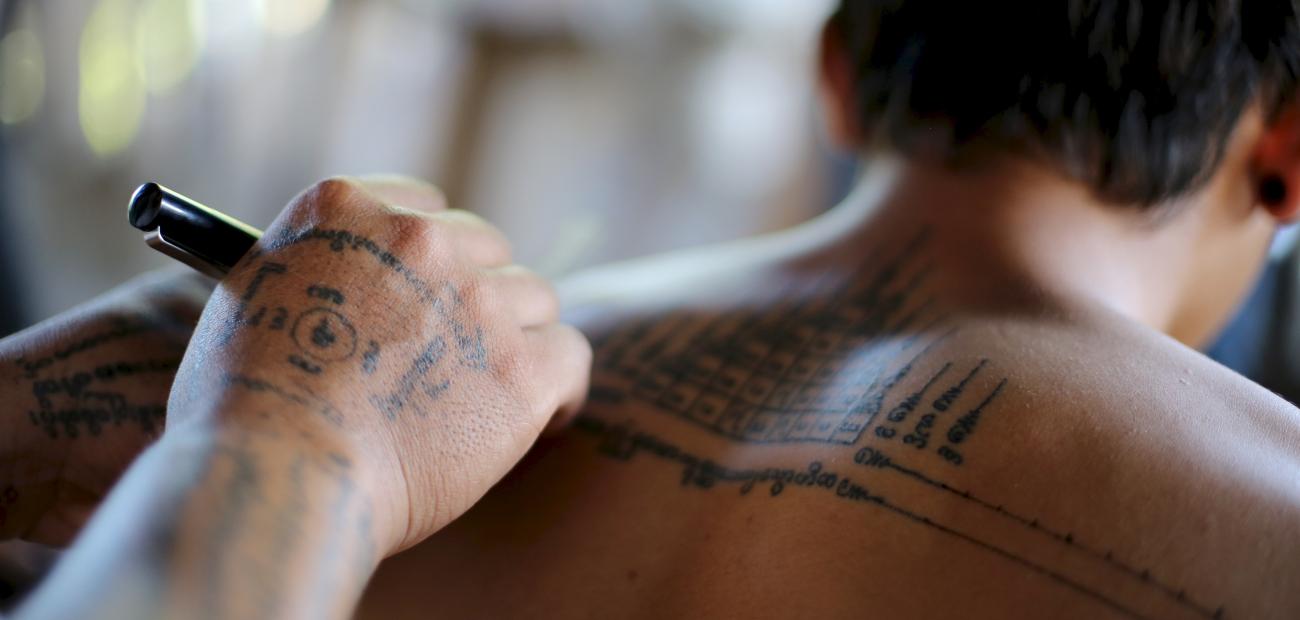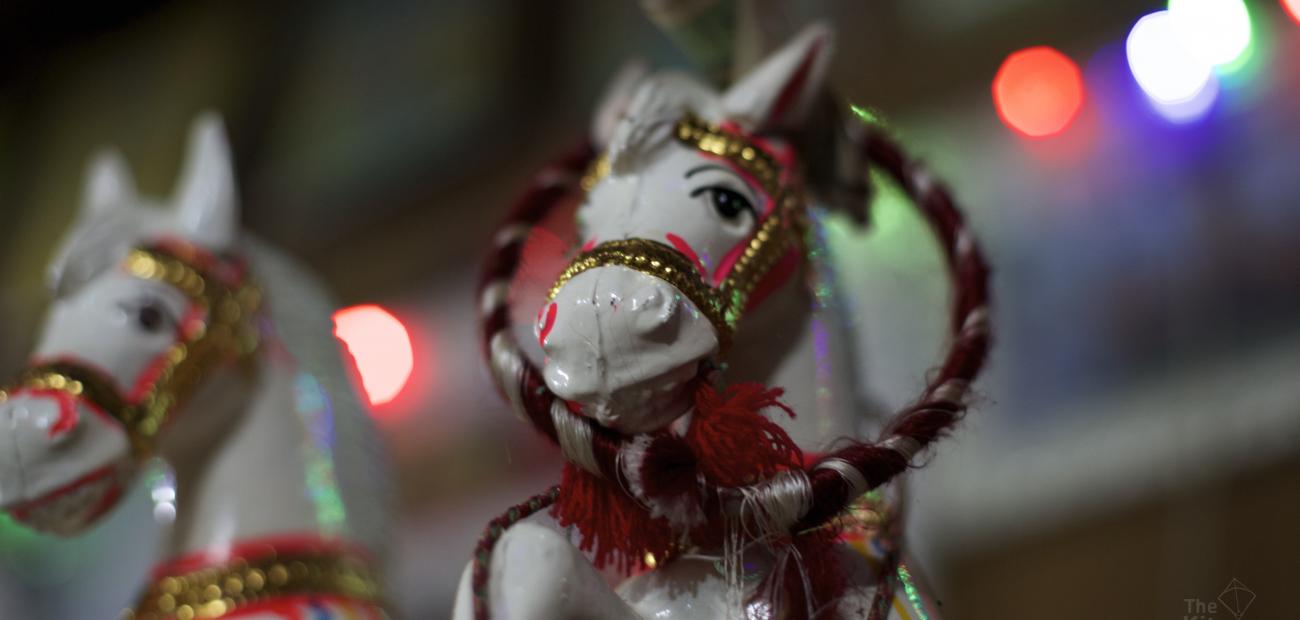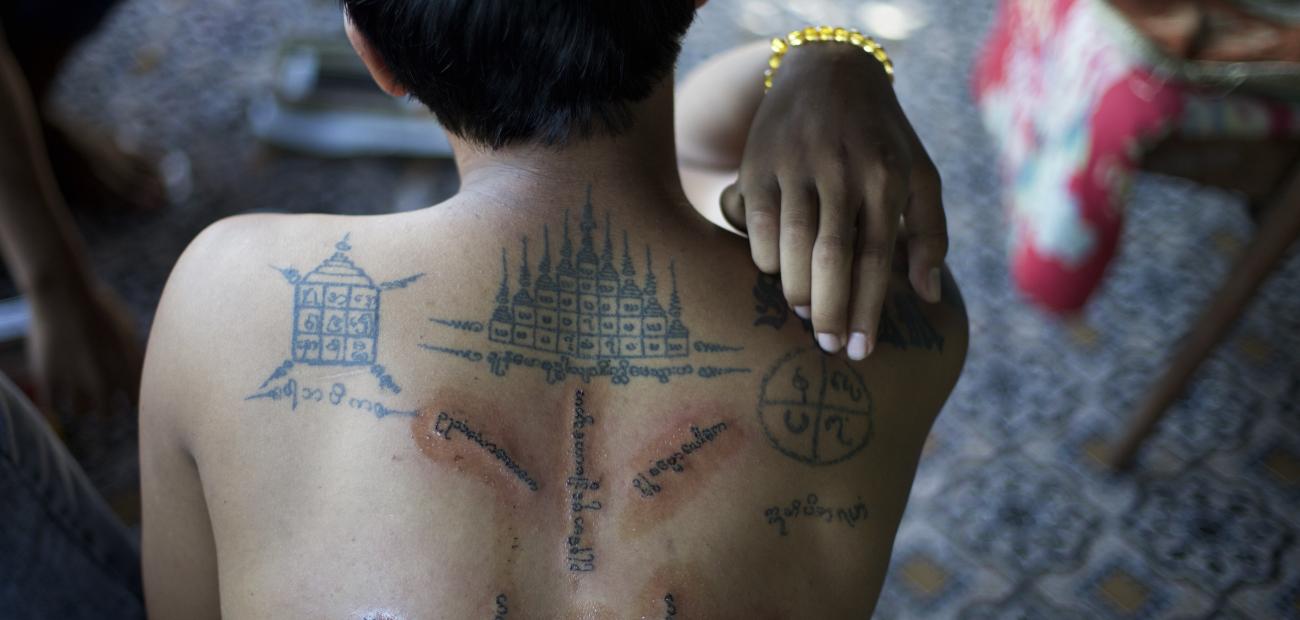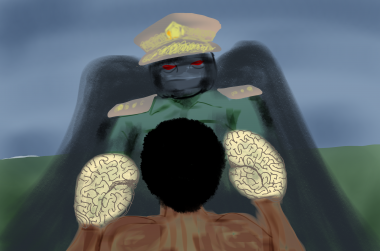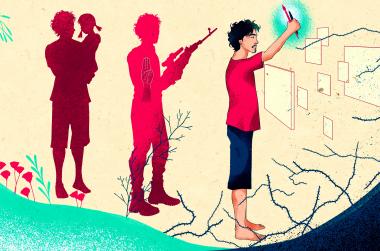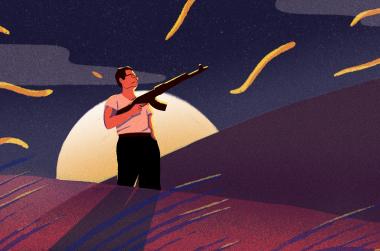Sai Han Line settles back in his chair on the first floor veranda of his teakwood house, takes up a long metal needle and draws it towards the naked shoulders of a young man hunched at his feet. One of the last traditional tattooists in Shan State, he drills ink into flesh with surprising grace and as the intricate design begins to take shape, a queue is quietly forming.
A dozen teenagers and young men in their early twenties make themselves at home on the floor of the veranda, crunching sunflower seeds and sending plumes of cigarette smoke dancing into the cool afternoon air. Their voices barely disturb the rural soundtrack outside — the birds hustling in nearby trees, a clang of cooking pots, the hammer blow of home improvement — as they lean over the ragged pages of hand-drawn tattoo books. The designs are talismans of the skin, believed to protect the wearer from danger.
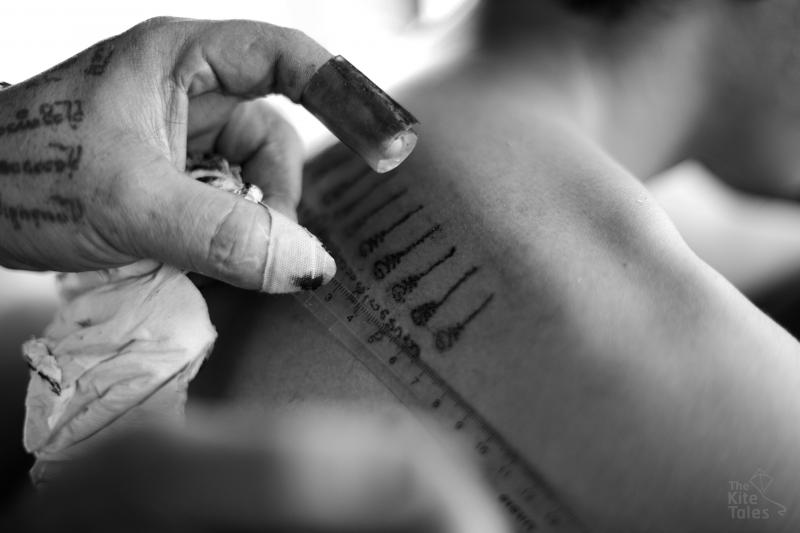
“At the moment I only tattoo ‘Kone Lone Say’. It shields you from all harm. Hence the name (which means) all-protecting medicine.
“You can find them in scriptures. I didn’t design them myself. You can’t just come up with a tattoo on your own, it’s risky.
“The designs have been around since ancient times. The teacher who taught me shamanism also gave me a few and I brought some back from Thailand.
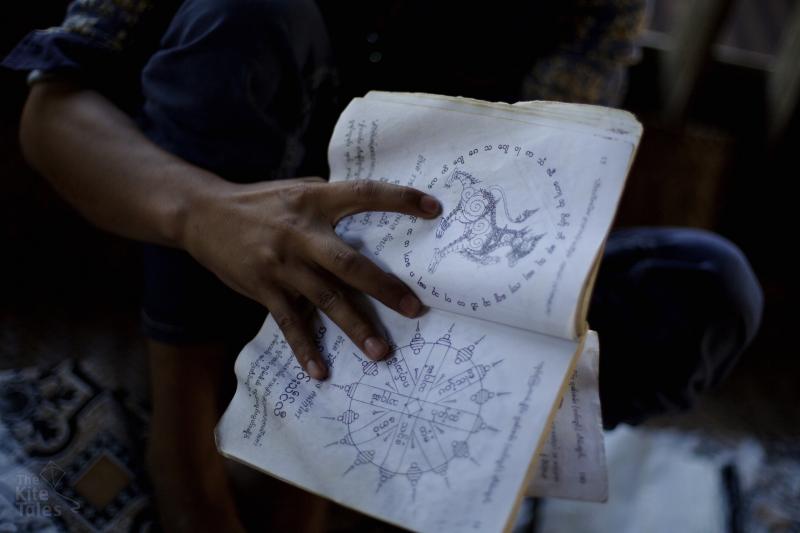
“We have lots of books with all the mystic designs and incantations. When people come here, they flip through them and then tell me which ones they like. I don’t tell them which ones to get, they have to choose. That’s how they protect themselves.
“I also tattoo cabalistic squares that keep the wearer safe and recite Pali incantation,” he says.
The 23-year-old knows most of the designs and chants by heart, but keeps the books close for reference.
“I’m looking at this one because this is quite complicated and it has drawings of ogres so you have to be careful. I don’t want to make a mistake because if it’s wrong, it would not have much potency.
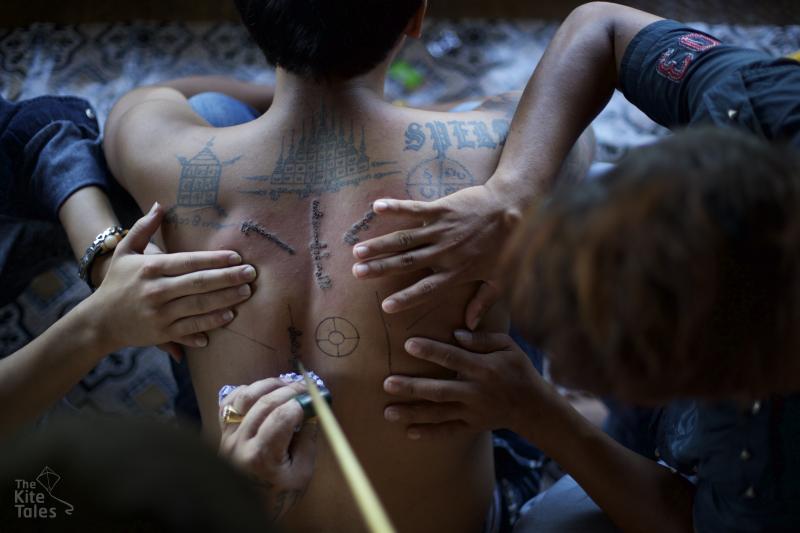
“I’ve been doing this for about five years now. I used to peel off banana tree (bark) and practice on that with barbed wire. I didn’t study under anybody but I had many teachers. From one, I just learnt how to treat people and how to make offerings."
He did spend a few years learning about the craft in Thailand, where traditional tattoos have similar styles.
“I did go to Thailand to see how they do it there. But I only observed. I learned by practising on my own,” he said.
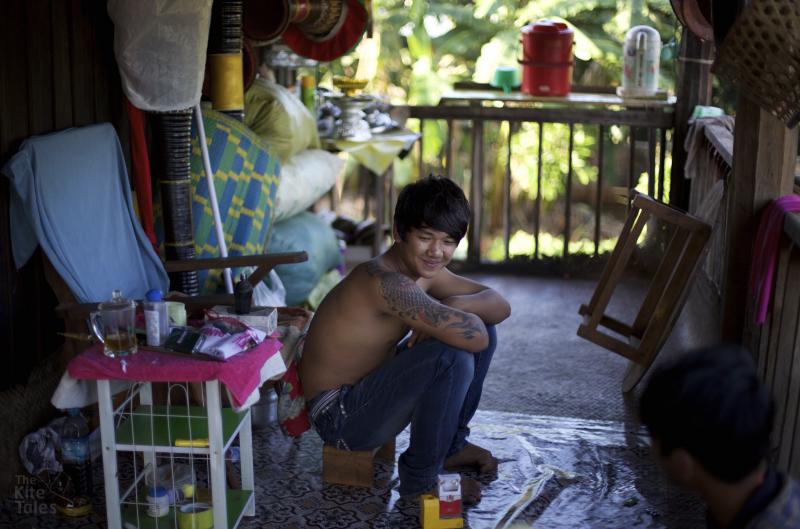
Sai Han Line has an almost mystical reputation around Lashio, where some say he is the reincarnation of a long-dead tattoo artist. He smiles and shrugs at the folklore, attributing his skills as a shaman to patience, practice and the right attitude.
“If someone comes to me, I’ll lay hands on the person and I’ll know what is wrong with him or her. I know whether the person should go to the hospital or be treated by me.
“To be able to do this, you have to really want to do it, to find it interesting, and wish your clients well. The people who come to get the tattoos also have to keep the vows they make.
“If you’re not very keen and only came because your friends told you to, you won’t be able to bear the pain.
“From what I have seen, the tattoo done by hand only hurts while you’re getting it done. Once it’s over, it doesn’t sting anymore it just feels hot. When you’re using a machine, it isn't painful while it’s being done, but it hurts when it’s over.
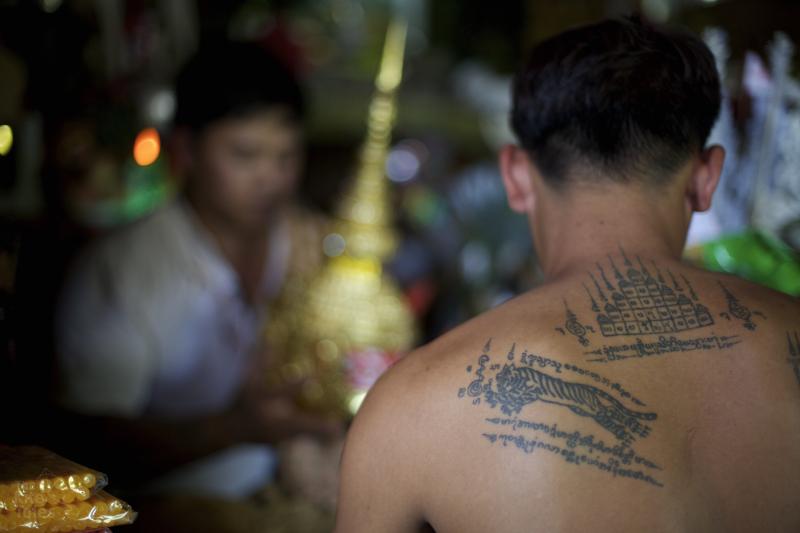
“My students did my tattoos for me. My teacher too -- I went to get it done by a monk in a village. I brought my own ink and needle with me and asked the monk to do it.
“My students need to know how to place their hands, when to press lightly and when to put pressure. So I let them do it on my hand, and tell them ‘that is the right way’.
“I teach people if they are really keen. If you are interested and have goodwill, it’s easy.”
**SAFETY NOTE: If you are thinking of getting a tattoo, make sure to ask the artist to use a clean needle.**
Interviewed October 2016
